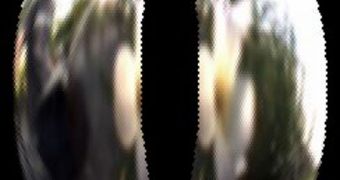Ever since scientists learned that the eyes of bees allowed the insect to execute remarkable feats of flight and reconnaissance, they wanted to be able to replicate the ability. Even though the flying insects have very tiny brains, they are able to make complex decisions based solely on their vision. They have many eyes, whose “live feeds” are centralized into a single image. Now, experts managed to replicate this capability, by designing a light-weight imaging system mimicking a honeybee’s field of view.
This advancement could hold significant implications for the field of robotics. In the near future, we may become able to construct far more efficient and reliable robots that could actually navigate their environment without needing constant pampering. Creating small flying insects, to be used for espionage and surveillance could also become a reality soon. A paper detailing the recent innovation appears in the August 6 issue of the esteemed journal Bioinspiration & Biomimetics, which is edited by IOP Publishing.
The artificial bee eye features a fully functional camera, which scientists hope to use in order to gain new insight into the complex sensing, processing and navigational processes that the insect is capable of performing. The accomplishment belongs to researchers based at the Center of Excellence “Cognitive Interaction Technology,” at the Bielefeld University, in Germany. “Despite the discussed limitations of our model of the spatial resolution of the honeybees compound eyes, we are confident that it is useful for many purposes, e.g. for the simulation of bee-like agents in virtual environments and, in combination with presented imaging system, for testing bee-inspired visual navigation strategies on mobile robots,” the experts say.
The main elements of the new device are an USB video camera and a complex system of light-weight mirrors and lenses. The two are hooked to each other in a very specific way, which allows for incoming light to take on exotic pathways. The field of view the system has is therefore increased, and the level of detail is augmented as well. The German team hopes that additional research into this new technology will yield field-worthy devices in the near future, AlphaGalileo reports.

 14 DAY TRIAL //
14 DAY TRIAL //